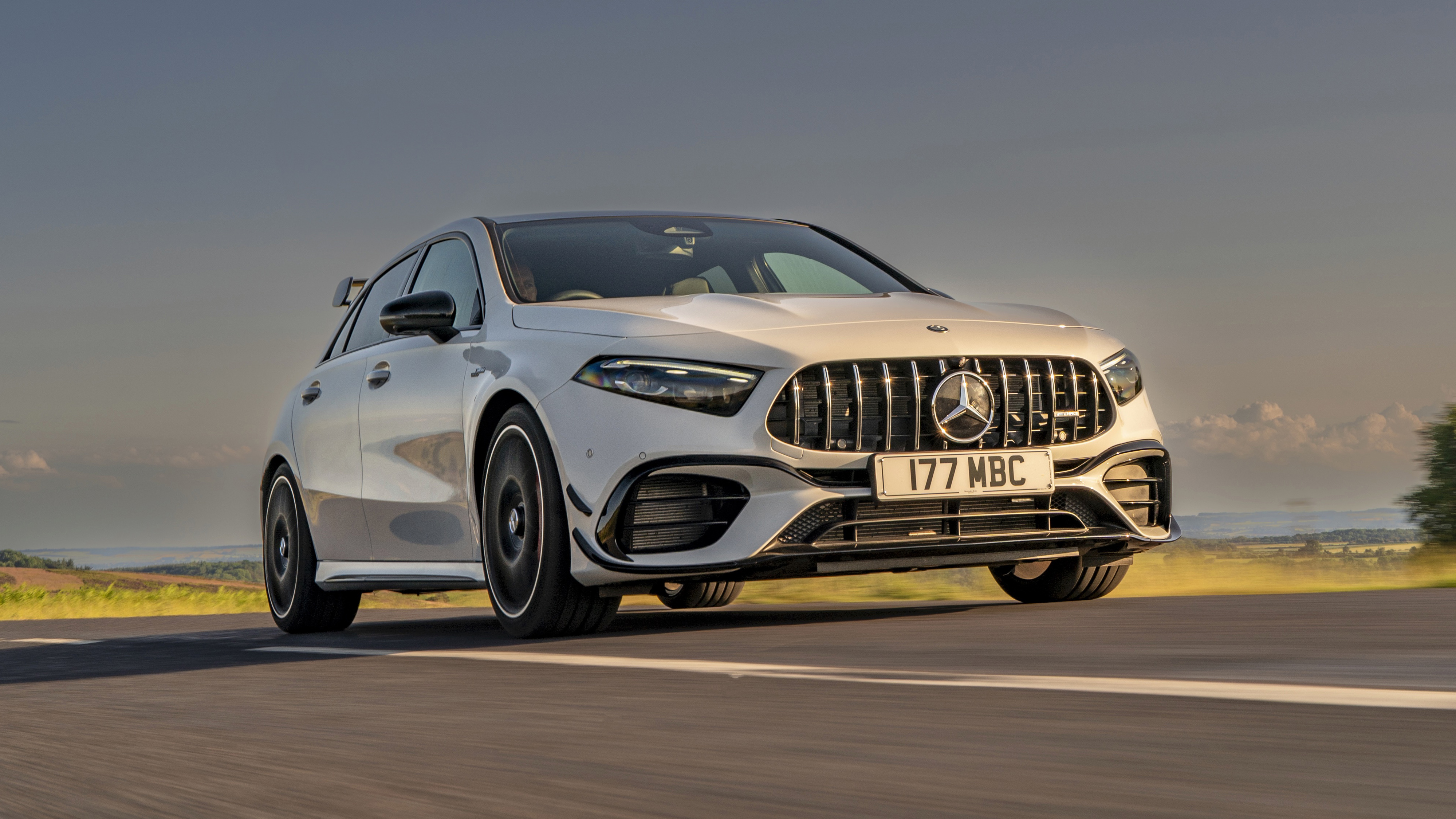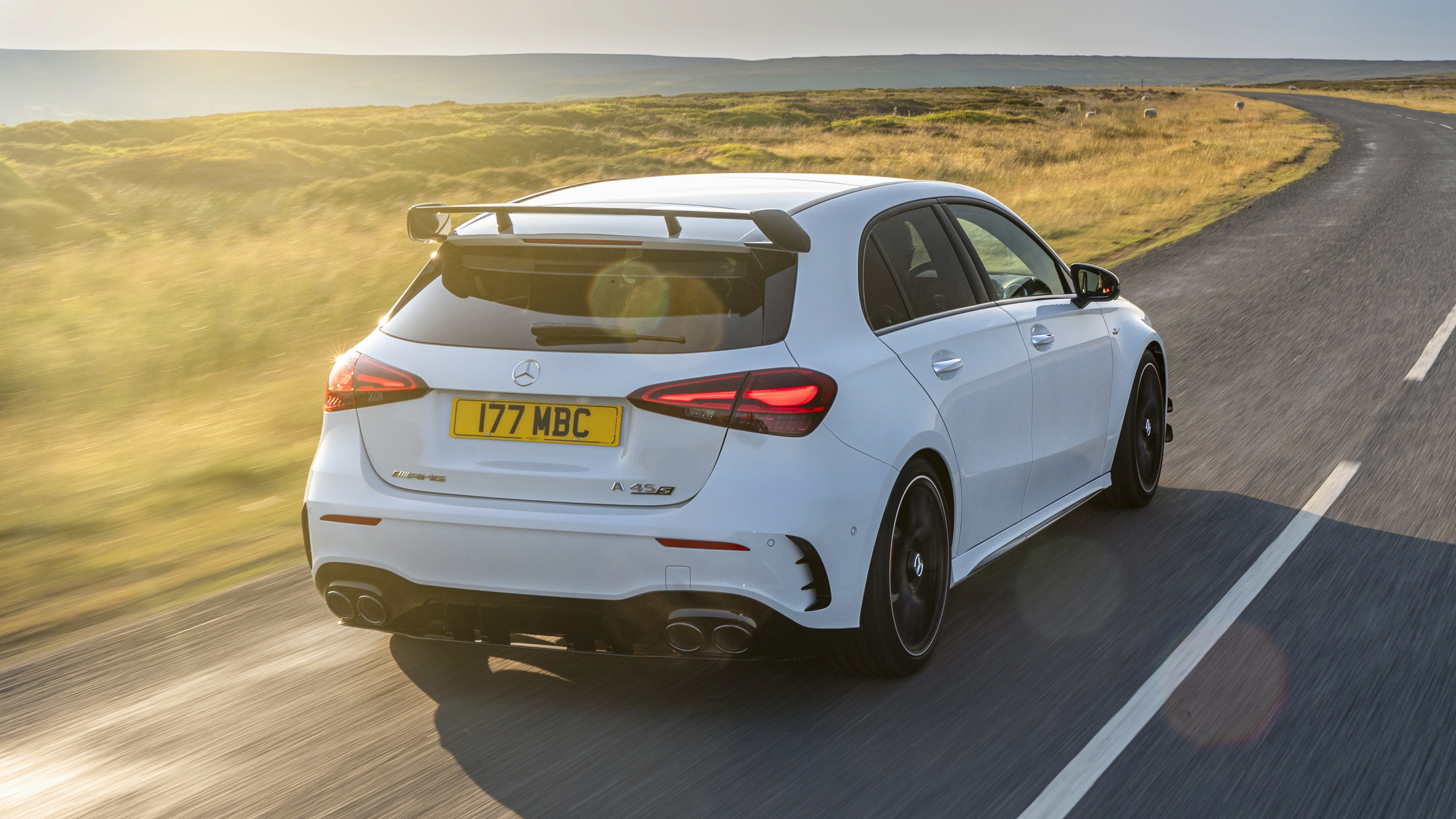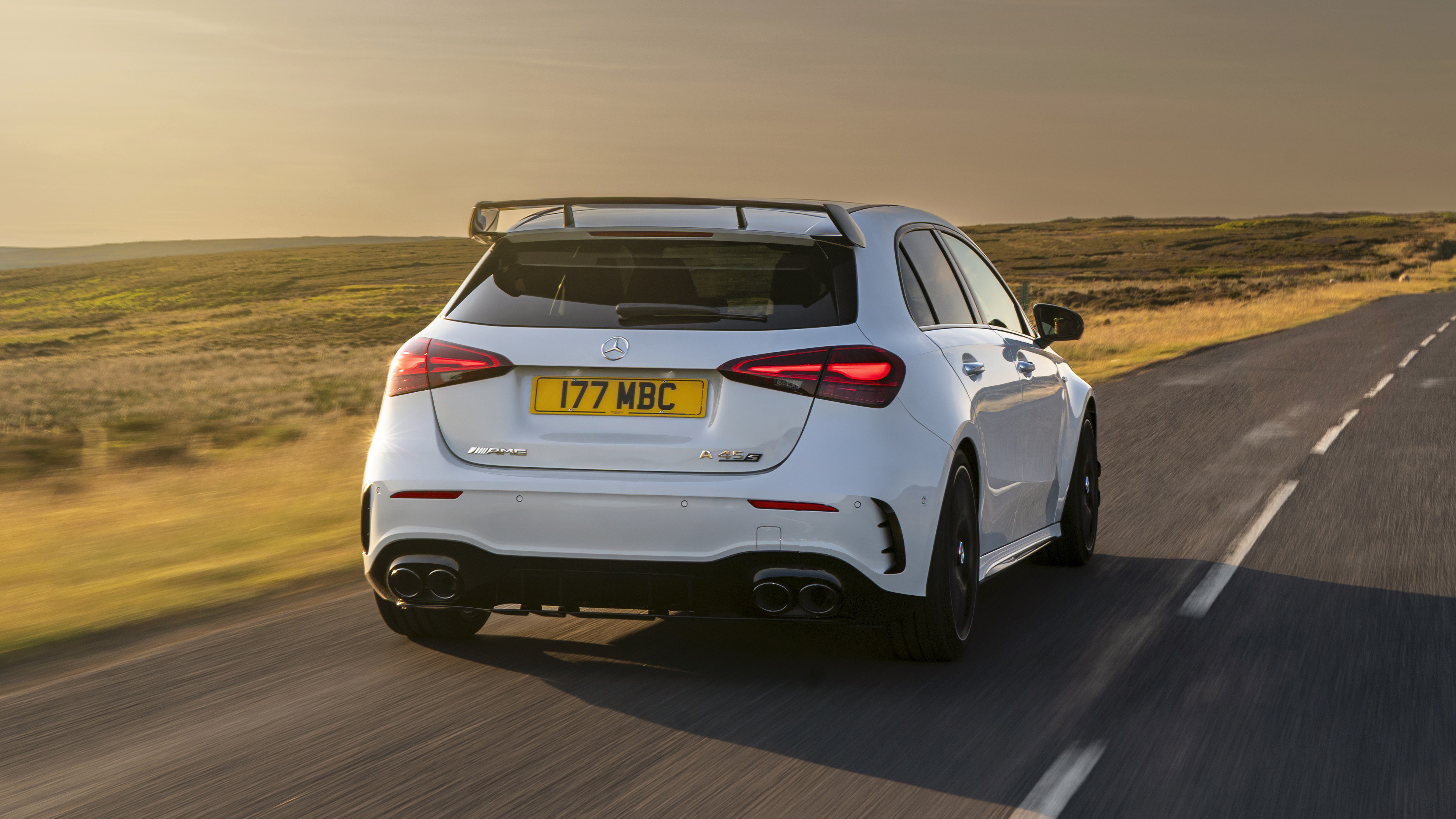
Good stuff
Brilliant engine, clever driving tech, well judged ride/handling balance
Bad stuff
It’s a £60k A-Class, needlessly complicated screens and set-up
Overview
What is it?
This is the souped up version of Mercedes’ fourth-generation A-Class hatchback, which was launched in 2018 and facelifted at the end of 2022. Now it's time for the AMG A45 version to get in on the action.
The styling changes are minimal. Instead Merc has focused on tech upgrades inside to keep the car in line with what buyers have come to expect in recent years.
As with other AMGs, the A45 comes in two variants: plain A45 and the more flavoursome A45 S. The latter - with an extra 33bhp, more standard kit, bigger wheels (19s not 18s), larger exhaust pipes, double the number of diffuser fins, bigger brakes, and variable driving modes - is the only one available in the UK.
Does the AMG A45 drive well?
Solid question. It’s not a fine edged scalpel, if you’re looking for the sort of finessed, feelsome driving experience of a truly honed performance car. This is more like a computer-controlled chainsaw, tearing up roads to devastating effect.
Still, it’s a formidable weapon that’s packed to the gunwales with high-tech kit. The system takes information from everywhere: yaw sensors, steering angle, throttle and much else, then distributes its power (typically 50:50) between the axles.
At the front a mechanical slip diff distributes power to either side, but at the rear it’s fully electronic: a pair of sophisticated clutch packs can send 100 per cent to either wheel. It’s similar in effect to four-wheel steering, tightening up corners and keeping the car laser focused along the road.
There’s also a Drift mode (available if you maximise every setting and put the ESP to sleep) that neatly limits torque to the front axle provided you’re giving it maximum sideways attack with the steering and throttle.
What’s the engine like?
The 2.0-litre 4cyl turbo engine produces 415bhp and 369lb ft – a heady set of numbers. That means 0–62mph in 3.9 seconds and a top speed of 168mph from a car that weighs 1,680kg. All solid numbers. What they don’t tell you is that the engine is a monster of a thing, with much of the urge of a clinical e-motor but still parping and whistling like a performance motor should.
The engine takes a moment to get going if the revs are down low, but once up to speed it sings, ripping through the gears and achieving frankly shameful speeds before you’re even aware of what’s going on. The roundabout squirt though Milton Keynes has never been so fun.
Sure, this is a devastatingly capable point to point device, but the real measure of a decent sports car is how well it livens up the mundane.
Talk nerdy to me.
It’s hard to consider a humble 4cyl as being very specialised, but it’s been turned through 180 degrees so the intake is on the front, exhaust and single turbo on the back, helpfully shortening the tract lengths and lowering the engine height at the front, allowing a more aerodynamic bonnet line.
Now consider the heat build up. The turbo is water, oil and air cooled, with the latter ducted through an intake behind the grille, under the engine cover, and then down past exhaust and turbo and out through an opening left purposefully in the floor.
The heat shielding is considerable. There are three water pumps: electrically driven for the intercooler and cylinder block, plus a beefier mechanical pump for the head. That last can pump 280 litres of water per minute – over twice the flow of a standard car. The intercooler has to get inlet temperatures down from 200 degrees to 50. When it can’t cope it’s able to call on the cabin air conditioning system for help.
The engine block is bespoke to this engine, able to withstand combustion pressures of 160bar – as tough as a diesel block, basically. To feel more naturally aspirated and give you a reason to hold on to each gear, maximum torque (369lb ft) now doesn’t arrive until 5,000rpm, the delivery ramping up through the mid-range, rather than jumping at the bottom end and then simply sustaining.
What's it up against?
This is very much at the serious end of the hot hatch spectrum, so the A45 S can count the Audi RS3, Honda Civic Type R and VW Golf R among its main rivals.
You could throw the likes of the Hyundai i30N, Toyota GR Yaris and Ford Focus ST into the mix as well if you like, although those operate in a slightly more affordable section of the market.
Our choice from the range

What's the verdict?
The 415bhp engine, the 4WD system, body stiffness, suspension, the electronics that support everything – all are highly impressive and very well integrated. It is a very particular type of car: a bombastic hatch, big on speed and extrovert gestures, lacking a little in delicacy and adjustability. Leave that to coupes such as the Porsche Cayman or Alpine A110.
The A45 has a different brief: to go fast and have fun. That aligns it precisely with the Audi RS3, a car that is both less talented and less charismatic. The A45 has a pretty big sweet spot: it looks good inside and out, operates unobtrusively when you don’t demand much from it, and goes properly feral when you do.










